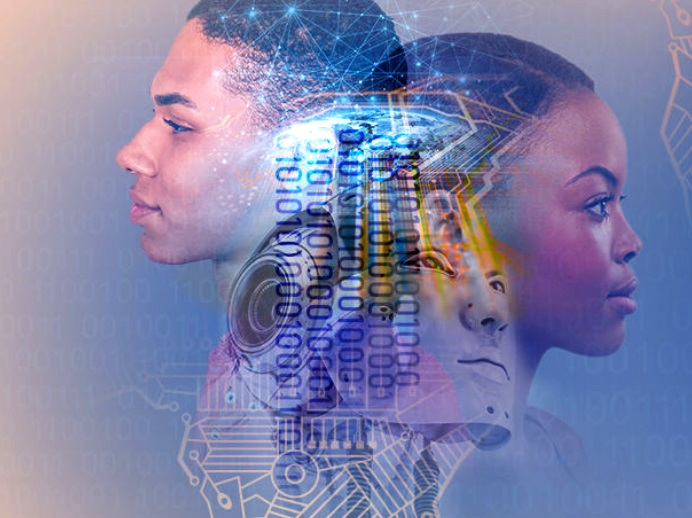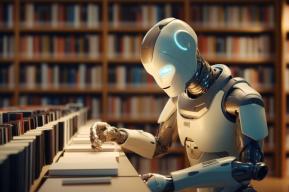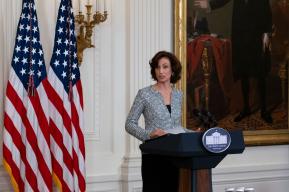At the Southern Africa sub-Regional Forum on Artificial Intelligence (AI), UNESCO launched a comic strip, Inside AI: An Algorithmic Adventure. Katie Evans, writer of the script, discussed the purpose of the novel and exchanged with young students eager to learn more about AI.
Engaging audiences in an accessible and entertaining way
In the framework of UNESCO’s work to harness emerging technology for sustainable development, Inside AI: An Algorithmic Adventure helps young adults explore the impact of Artificial Intelligence on humankind.
Nashilongo Gervasius Nakale (Namibia University of Science and Technology) interviewed Katie Evans, PhD in Philosophy and the Ethics of Artificial Intelligence and the author of Inside AI, to explain the intricacies of AI.
Q.1 The graphic novel is divided into four episodes, each addressing one major concept related to AI. What was the process of selection, and what are the main themes of the novel?
AI is incredibly multi-faceted and affects each of us in many different—and sometimes surprising— ways. At the outset, it was difficult to choose not only which concepts to focus on, but also how to string them together without losing the reader. There are at least 16 core scientific concepts in the novel, but the main topics we broached were the digital divide, algorithmic bias, echo chambers, and the environmental impact of AI. In the end, our aim was to leave the reader with a comprehensive and entertaining take on some of the most pressing social and ethical issues in AI, and to squeeze in as much science as we could along the way.
Q.2 How difficult was it to adapt a topic as complex as AI into a comic strip? Was there a process you went through to simplify concepts without stripping them of their scientific value?
To tackle [the abstractness of AI] without turning the novel into a textbook, my idea was to depict Artificial Intelligence as a place rather than an object or concept, and make this place the setting of the story itself. This gave rise to this alternate, algorithmic universe called Plethor.A.I., which is essentially one big, extended metaphor for what today’s AI might look like from the inside. From there, a lot of the adaptation took care of itself: platforms became planets, the ‘Cloud’ became a sort of Milky Way stretching across the galaxy—there is even an E-waste Asteroid Belt!
Q.3 You worked with a team of illustrators to produce the novel. Were there any key messages you collectively wanted to convey when writing the script, beyond the challenges of AI?
Yes! There was certainly a collective desire to showcase diversity and be inclusive with the way the story was told. Some voices, such as those of women or those from under-represented parts of the world, deserve to be heard much more in the debate around AI. Our way of addressing this was not only to develop characters from diverse places such as Latin America, Africa, the Middle East, and Oceania, but to infuse the setting, aesthetic, and storyline of each episode with as much cultural accuracy as possible. We were lucky enough to have an all-female team of very talented illustrators who themselves hailed from these regions, and whose very rich and enthusiastic work surely brought the project to life.

Questions from students of UNESCO Associated Schools Network (ASPnet) in Namibia
Q.4 I saw a video where Elon Musk said AI is far more dangerous than we think. Since AI works faster than a human does, could it impact job opportunities in the future?
AI can do mathematics and statistics better than humans, so it may seem that AI is better than humans across the board. You may also think that there is no room for humans at all in the future. This idea is wrong. First, because it is not the future we want, but also because it is not true given the way that we are going with AI. At all times, it is important to think about future work opportunities for human beings and the way AI fits in this picture, not the other way around. Moreover, AI is not systematically better at everything. For example, an AI may beat a chess champion, but that same AI can’t even tie a shoelace.
Q.5 If you are programming a driverless car, what should it do if a young baby was crawling across the road at the same time as an old lady was crossing the same road?
There are 2 types of ways we can reason about this. One way is to look at the solutions traditional moral theories—such as utilitarianism—would provide to these sorts of dilemma questions. Another is to look to the society in which the car is implemented for answers; what might citizens expect from the behaviour of driverless cars in these situations? In the end, we want driverless cars to cause as little harm as possible, and where they must cause harm, we want this to align with the expectations of those users in the car’s environment. Driverless cars don’t have their own sense of morality, it’s up to the humans which design these cars to ensure their behaviour is acceptable to everyone.
The novel was launched as a side-event for the UNESCO-Southern Africa sub–Regional Forum on Artificial Intelligence held in Windhoek, Namibia.

UNESCO Southern Africa sub-Regional Forum on Artificial Intelligence










